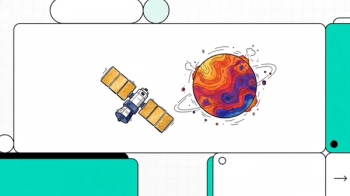
Autonomous Mineral Classification Enhances Planetary Exploration
A recent study from American Mineralogist looked at improving mineral classification using dual-band Raman spectroscopy.
The global population has invested interest in planetary surface missions. A reason why we at Spectroscopy have provided considerable coverage of the Perseverance rover and its mission on Mars, for example, is because the scientific breakthroughs being achieved through these missions could shape our future culture on Earth (1–3).
Planetary surface missions have relied heavily on semi-autonomous rovers for navigation and surveying. Although these intelligent systems excel at traversing difficult terrains and gathering a wealth of environmental data, the ability to analyze collected samples autonomously is still a growing area of research (4). Currently, instruments aboard rovers depend on remote commands from scientists on Earth for analysis and interpretation, resulting in delayed feedback and decision-making (4).
A recent study conducted by Timothy K. Johnsen and Virginia C. Gulick, who both work at the NASA Ames Research Center and the SETI Institute, explored this topic. In their work, they sought to improve mineral identification through the development of autonomous classifers (4). Their study reveals how important dual-band Raman spectroscopy is to mineral identification and analysis. Their findings were published in the journal American Mineralogist (4).
In their study, Johnsen and Gulick integrated a co-registered dual-band Raman spectrometer, which irradiates the same sample using two different wavelengths: 532 nm and 785 nm (4). By employing these two lasers on the same spot, the duo was able to improve the accuracy and robustness of mineral classification.
What made the dual-band approach a success was because of its setup. Being able to provide a broader spectrum of data, dual-band Raman spectroscopy allowed the researchers to analyze 191 rock samples, which is significantly more than they would have been able to without their modifications (4). The research team was able to identify rock-forming minerals such as olivine, quartz, mica, gypsum, and potassium feldspar. This is significant because these minerals are known to reveal important details about how rocks are formed, including shedding light on the environmental conditions at play during formation (4). For example, the presence of olivine and pyroxene can point to volcanic origins, while minerals like gypsum may indicate past water activity (4).
Machine learning (ML) also played a key role in this study. In the study, the researchers used ML algorithms to interpret the complex spectral data generated by the dual-band Raman spectrometer. For single-mineral classification, accuracy rates reached up to 100% for certain minerals, with an overall classification rate of 91% (4). For more complex multi-mineral samples, accuracy rates still reached up to 96%, with an overall classification success rate of 73% (4).
The researchers, therefore, concluded the following from their study: first, dual-band Raman spectroscopy significantly outperformed single-band Raman spectroscopy, particularly when combined with advanced ML techniques (4). Second, this dual approach allowed for better discrimination between minerals that were difficult to differentiate with a single wavelength (4). The researchers demonstrated this through a series of hypothesis tests, confirming that dual-band spectroscopy increases both the robustness and the scientific yield of mineral classification (4).
Autonomous classifiers are set to be important in propelling space exploration forward. Because rovers and landers will have the ability to be equipped with intelligent onboard systems, these devices will be able to make better decisions about what samples to collect and where to explore (4). As a result, the hope is that these developments in technology will improve mission efficiency and the time lag between data collection and analysis.
References
- Wetzel, W. How NASA’s Perseverance Rover is Using Spectroscopy to Uncover the Secrets of Mars. Spectroscopy. Available at:
https://www.spectroscopyonline.com/view/how-nasa-s-perseverance-rover-is-using-spectroscopy-to-uncover-the-secrets-of-mars (accessed 2024-10-21). - Wetzel, W. UV Radiation Impact on Raman and Infrared Signals: A Look at the Surface of Mars. Spectroscopy. Available at:
https://www.spectroscopyonline.com/view/uv-radiation-impact-on-raman-and-infrared-signals-a-look-at-the-surface-of-mars (accessed 2024-10-21). - Wetzel, W. Using Raman Spectroscopy to Detect Life on Mars. Spectroscopy. Available at:
https://www.spectroscopyonline.com/view/using-raman-spectroscopy-to-detect-life-on-mars (accessed 2024-10-21). - Johnsen, T. K.; Gulick, V. C. Single and Multi-Mineral Classification using Dual-Band Raman Spectroscopy for Planetary Surface Missions. Am. Miner. 2024, ASAP. DOI:
10.2138/am-2023-9072
Newsletter
Get essential updates on the latest spectroscopy technologies, regulatory standards, and best practices—subscribe today to Spectroscopy.





